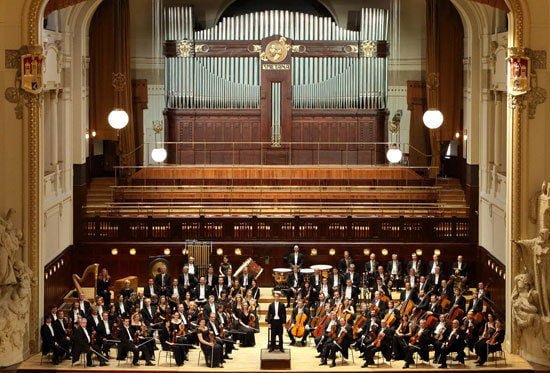 Bradford’s truncated Orchestral Concert Season still boasts this evening of Czech musicians playing Czech music, an experience to savour anywhere in the world. The Prague Symphony Orchestra, conducted by Jan Kucera (pictured below), programmes Smetana’s symphonic poem Sárka, the third symphonic poem of the six that make up Má Vlast (“My Country”). So intricately is this work bound up in the nation’s cultural life that the entire work ritually opens the Prague Spring International Music Festival each year, but it is a cycle not quite the sum of its separate parts.
Bradford’s truncated Orchestral Concert Season still boasts this evening of Czech musicians playing Czech music, an experience to savour anywhere in the world. The Prague Symphony Orchestra, conducted by Jan Kucera (pictured below), programmes Smetana’s symphonic poem Sárka, the third symphonic poem of the six that make up Má Vlast (“My Country”). So intricately is this work bound up in the nation’s cultural life that the entire work ritually opens the Prague Spring International Music Festival each year, but it is a cycle not quite the sum of its separate parts.
Sárka is a dark depiction of a fabled Bohemian warrior princess, rightly outraged by the infidelity of her lover, but now hell-bent on the destruction of the entire male sex. Smetana manages a piquant Wagnerian love scene, but, trapped in a world sadly devoid of anger management classes, Sárka finishes in predictable heartache. The bloodcurdling conclusion is one of Smetana’s most vivid creations.
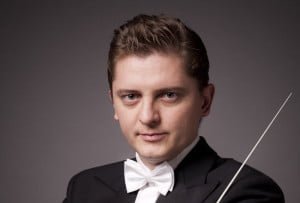 Dvořák’s Symphony No. 8, the last such work he wrote on European soil, is the one most characteristic of the composer’s homeland and these musicians should have it firmly established in their orchestral blood line. The serene, unhurried opening melody on cellos and horns epitomises the work’s reflections of nature. The slow movement is surely inspired by the Czech countryside and the gracious contours of the refined waltz unashamedly spring from folk roots. The set of variations that follows, based on the trumpet measures at its beginning, portrays scenes ranging from fleeting bird flight, courtesy of some imaginative flute writing, through to stormy fury, which gives the whole orchestra the opportunity for a vigorous concluding work out.
Dvořák’s Symphony No. 8, the last such work he wrote on European soil, is the one most characteristic of the composer’s homeland and these musicians should have it firmly established in their orchestral blood line. The serene, unhurried opening melody on cellos and horns epitomises the work’s reflections of nature. The slow movement is surely inspired by the Czech countryside and the gracious contours of the refined waltz unashamedly spring from folk roots. The set of variations that follows, based on the trumpet measures at its beginning, portrays scenes ranging from fleeting bird flight, courtesy of some imaginative flute writing, through to stormy fury, which gives the whole orchestra the opportunity for a vigorous concluding work out.
Beethoven’s Violin Concerto is one of the most lyrical of the genre. The 1806 premiere turned out to be music-making on a knife-edge. Routinely, Beethoven was notoriously late fulfilling commissions and poor Franz Clement was said to have had to sight-read the solo violin part on the night. Although Clement’s dilemma has been well-publicised over the years, it is entirely possible that he received successive pages of the solo line as the work progressed. What have clearly been disregarded were the similar problems which the rest of the assembled players must have faced. Even today, timpanists fear its opening. Four soft beats on the note D begin proceedings. Then the orchestra enters in radiant D major stating the movement’s main theme. Imagine the nightmarish possibility of those four beats not quite being in tune. Professional percussionists do.
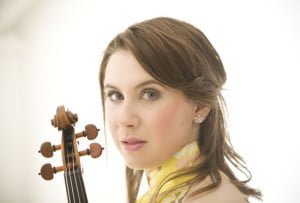 The wonderful Chloë Hanslip (pictured left) – what a committed, sustained Sibelius Concerto she gave us last year – will not be taking such risks with the notes. What makes her performances such compelling listening is how she pushes her consummate technique to its considerable limits in the service of the music’s emotional credentials. Musical Quarterly‘s analyst Owen Jander describes Beethoven’s central Larghetto as “one of the most mysteriously serene pieces of music ever composed”. It is deceptively simple, a rarefied, delicately brittle creation, which the eloquent Miss Hanslip is likely to realise as a hauntingly poetic expression of musical romanticism.
The wonderful Chloë Hanslip (pictured left) – what a committed, sustained Sibelius Concerto she gave us last year – will not be taking such risks with the notes. What makes her performances such compelling listening is how she pushes her consummate technique to its considerable limits in the service of the music’s emotional credentials. Musical Quarterly‘s analyst Owen Jander describes Beethoven’s central Larghetto as “one of the most mysteriously serene pieces of music ever composed”. It is deceptively simple, a rarefied, delicately brittle creation, which the eloquent Miss Hanslip is likely to realise as a hauntingly poetic expression of musical romanticism.
Prague Symphony Orchestra perform at St George’s Hall, Bradford on 21 November 2015.
Filed under: Music
Tagged with: Beethoven, Bradford International Concert Season, Bradford Theatres, Chloë Hanslip, Dvořák, Jan Kucera, Prague Symphony Orchestra, Smetana, St George's Hall, Tom Tollett
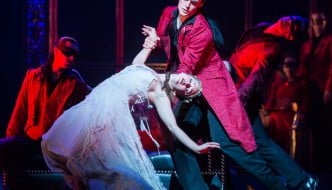
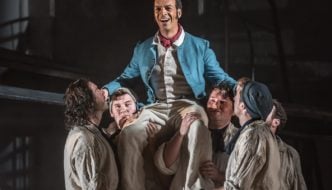
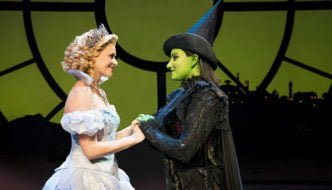
Comments